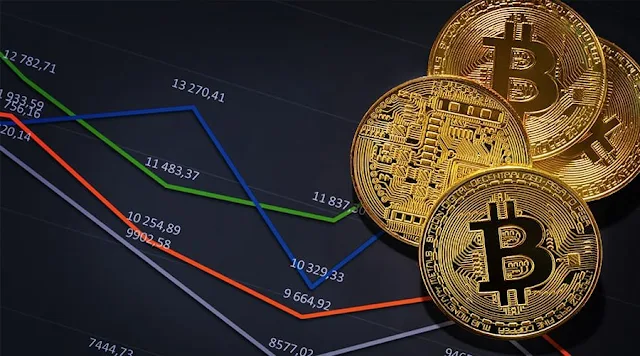Ad Code
Translate
List of 6,000+ Dofollow Commentluv Blogs FREE (Updated 2025)
January 16, 2025
What is Ozempic (semaglutide)? (Updated in 2025)
January 30, 2025
How To Find Suitable Properties In Cyprus? (Updated in 2025)
January 11, 2025
Smart strategies for trading on crypto exchanges
February 18, 2025
Crypto Trader’s Guide: Understanding Fundamental and Technical Analyses
Khabza Mkhize
October 04, 2023
Strategy reigns supreme in the world of Bitcoin trading. It cannot be helped that there will always be a debate over which method of analysis is the best. Your chances of profit-making may increase if you use the appropriate trading method analysis.
However, things will not go well if you choose the wrong approach.
When addressing the markets, fundamental and technical analyses are two significant options, but they are on different sides. This article will look at the overview of the two analyses and discuss the advantages and disadvantages.
What is Fundamental Analysis?
Fundamental analysis in traditional finance comprises macroeconomic (overall economy and industry) and microeconomic (business figures, financial indicators, and views) elements. Basic research in the crypto industry tries to identify a crypto asset's inherent worth by considering both quantitative and qualitative variables. It helps determine if the crypto-asset is cheap or overpriced and decide based on that information. One may invest in the coin if they believe its price is low concerning its inherent worth and, in principle, profit. In addition, this analysis helps assess a crypto asset's long-term attractiveness.
Using this method of analysis has several benefits and drawbacks, which include the following:
Benefits
It limits the room for personal biases. It aids traders and investors in gathering the necessary data to make informed judgments about which position to take.
Long-term investors should consider it. Rather than price charts, future predictions are used by fundamental analysts to make judgments. As a result, fundamental analysis is better suited to anyone wanting to make a long-term investment choice or report on the cryptocurrency market.
It is considerably less intimidating than technical analysis since it does not need specialized abilities such as reading and understanding charts and trend lines.
Drawbacks
Short-term price changes are challenging to forecast. Fundamental analysis cannot predict the short-term price movements most crypto traders engage in since it does not focus on price movement utilizing charts.
It can take a long time since it requires numerous areas of investigation, making the procedure highly difficult.
Price performance does not always correspond to fundamental analytical requirements. When analyzing a project, fundamentals give a comprehensive view but do not always convert to pricing performance. For example, the size of a token's community may or may not affect its price.
What is Technical Analysis?
Instead of looking at the precise goal of a coin or project, analysts who adopt this approach look at historical market data (trade volume, previous coin pricing trends, etc.). Technical analysis is more concerned with price statistics and charts than their causes for them. It is a necessary component of intraday and other short-term trading. Because statistics are the foundation of technical analysis, there aren't many differences between crypto and traditional finance.
Compared to fundamental analysis, technical analysis requires a level of competence. Longer trends yield more consistent results than shorter trends.
Order books, trading volumes, candlestick charts and figures, SMA (moving averages), and MACD charts are tools and indicators used in this method.
Benefits
Trading tools allow you to interact with the market at any time and create your strategies based on it, using a variety of indicators and/or statistics.
It aids in the discovery of new trends. The Technical analysis identifies recent trends and trend reversals, making time trade entries and exits easier.
There are already established rules for interpreting various technological signals. Technical signals are produced based on historical price data, which means investors have a guideline of what to expect when an alert is triggered. In contrast, fundamental research is up to an investor's opinion.
Drawbacks
It ignores fundamental market-moving forces. Indicators are a result of price formation rather than a cause. Still, they allow you to anticipate short-term changes with a high degree of certainty, identify the times when trends change, and track how oversaturated the market is at any time.
It demands a high level of expertise. Although gathering data for technical analysis is simple, reading charts and patterns takes skill.
It is prone to mistakes because of cryptocurrencies' high volatility. Any indicator used in the technical analysis must reliably anticipate future trends to function correctly. The high volatility of most digital currencies is well-known, which can impact the findings of any indicator used.
Which analysis should you use?
Most traders combine the two approaches, examining historical statistical data and the inherent worth of each asset. The worst error you can make with technical analysis is to put too much faith in the approach. It might be a mistake to rely on it alone; you will need further information and context. Fundamental analysis is in the same boat. It will frequently represent an item's value rather than the current market price.
Simply put, it depends on how you use each method. You must also put extra effort into researching your preferred crypto-asset(s) to minimize trading risks. Again, it is worth noting that cryptocurrency markets are volatile. Whichever method you use, it is also best partnered with a secure and user-friendly trading platform like Bitcoin Era. All real-time data, from price changes to chart updates, are available here to make it easier to perform your analysis!
Featured Post
12 Prominent new technologies and trends emerging in 2025
Khabza Mkhize-
April 02, 2025
Soapie Teasers
Sister Sites
Most Popular
List of 6,000+ Dofollow Commentluv Blogs FREE (Updated 2025)
January 16, 2025
Smart strategies for trading on crypto exchanges
February 18, 2025
Popular posts
List of 6,000+ Dofollow Commentluv Blogs FREE (Updated 2025)
January 16, 2025
Smart strategies for trading on crypto exchanges
February 18, 2025
Footer Menu Widget
Created By Blogspot Theme | Distributed By Gooyaabi Templates


0 Comments